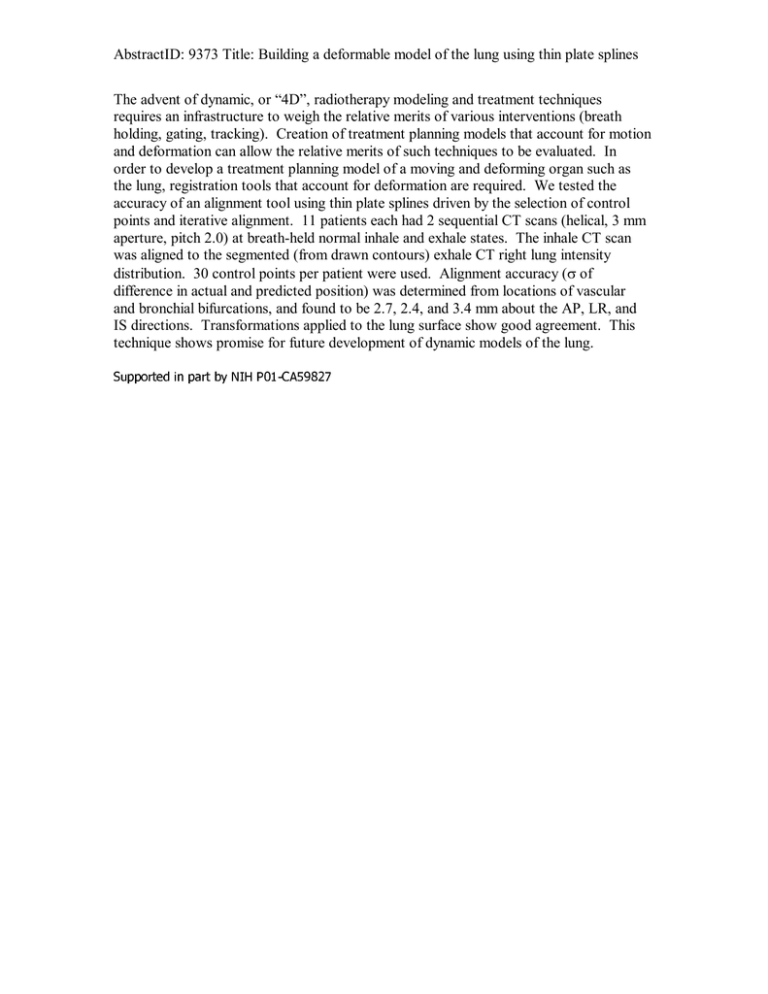AbstractID: 9373 Title: Building a deformable model of the lung... The advent of dynamic, or “4D”, radiotherapy modeling and treatment...
advertisement

AbstractID: 9373 Title: Building a deformable model of the lung using thin plate splines The advent of dynamic, or “4D”, radiotherapy modeling and treatment techniques requires an infrastructure to weigh the relative merits of various interventions (breath holding, gating, tracking). Creation of treatment planning models that account for motion and deformation can allow the relative merits of such techniques to be evaluated. In order to develop a treatment planning model of a moving and deforming organ such as the lung, registration tools that account for deformation are required. We tested the accuracy of an alignment tool using thin plate splines driven by the selection of control points and iterative alignment. 11 patients each had 2 sequential CT scans (helical, 3 mm aperture, pitch 2.0) at breath-held normal inhale and exhale states. The inhale CT scan was aligned to the segmented (from drawn contours) exhale CT right lung intensity distribution. 30 control points per patient were used. Alignment accuracy (σ of difference in actual and predicted position) was determined from locations of vascular and bronchial bifurcations, and found to be 2.7, 2.4, and 3.4 mm about the AP, LR, and IS directions. Transformations applied to the lung surface show good agreement. This technique shows promise for future development of dynamic models of the lung. 6XSSRUWHGLQSDUWE\1,+3&$





